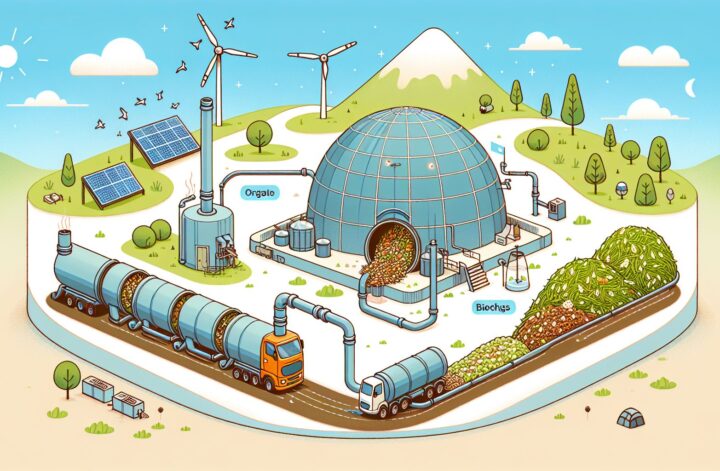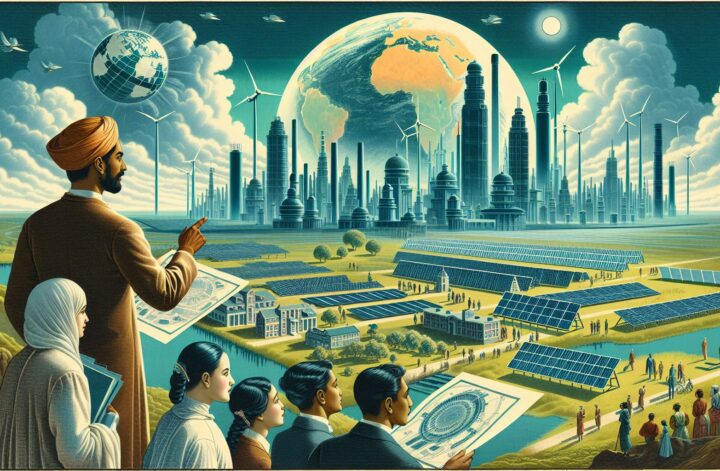Climate change is no longer a speculative subject but a harsh reality that demands urgent actions from upstanding nations and their citizens. As the climate crisis gains prominence in global discourse, one of the primary analytical pivots is the sources of the greenhouse gases that fuel the crisis. It is then essential to present novel energy alternatives, one of which is biogas, a goldmine that manages waste and plays a significant role in GHG emissions reduction[^1^]. This article will unwrap the process of biogas production, how it supports renewable energy drive, and the challenges mitigating its large-scale production.
What is Biogas?
Biogas represents a renewable source of energy generated from organic waste materials through a biological process known as anaerobic digestion[^2^]. The primary constituents of biogas are methane (CH4) and carbon dioxide (CO2), with traces of other gases like hydrogen sulphide. The methane component gives biogas its fuel characteristics, which can be harnessed for heat and power generation, leaving minimal environmental footprints.
Anaerobic Digestion: The Process of Biogas Production
Anaerobic digestion (AD) plays a significant role in biogas production, recycling organic waste materials into useful energy and nutrient-rich biosolids suitable for soil amendment. It is a natural process categorised into four linked stages: Hydrolysis, Acidogenesis, Acetogenesis, and Methanogenesis[^3^].
-
Hydrolysis: This process breaks down long-chain organic matter into simpler, soluble organic compounds through enzymes produced by hydrolytic bacteria.
-
Acidogenesis: Acidogenic bacteria further convert the hydrolyzed components into volatile fatty acids (VFAs), carbon dioxide, ammonia, and hydrogen sulphide.
-
Acetogenesis: Acetogenic bacteria then convert the resulting products into acetic acid, carbon dioxide, and hydrogen.
-
Methanogenesis: Methanogens, in the final stage, convert the acetic acid and hydrogen into methane and carbon dioxide — resulting in biogas.
The unique feature of AD is that it occurs in the absence of oxygen, and the bacteria involved are called anaerobes.
Biogas Uses and Benefits
Biogas, as a versatile renewable energy source, can be used directly for cooking, heating, and lighting. It may also undergo a refining process called biogas upgrading to remove impurities to produce biomethane, increasing its value and usability. The biomethane can substitute for natural gas in vehicles and power generations or injected into the gas grid[^2^].
Biogas production from organic waste contributes significantly to greenhouse gas reduction. Organic waste left to decay in open landfills releases methane, one of the most potent greenhouse gases. However, capturing the waste for biogas production controls and utilises the emitted methane for energy generation, reducing GHG emissions into the atmosphere.
Moreover, the solid residue from biogas production, known as digestate, is rich in nutrients and can be utilised in agriculture as organic fertiliser, reducing the dependence and environmental impact associated with chemical fertilisers.
Challenges of Biogas Production
Despite the immense benefits associated with biogas production, achieving efficient, large-scale production is impeded by several challenges.
-
Trace element deficiency: The anaerobic digestion process relies on a balance of nutrients and trace elements. A deficiency of these elements can impair the microbial activity, leading to process instability and reduced biogas yield[^3^].
-
Toxicity: Substrates with high levels of ammonia or sulphide can inhibit the anaerobic bacteria’s activity and hence biogas production.
-
Organic Load: High organic loading rates can also lead to process imbalance, disrupting biogas production[^3^].
Even with these challenges, continued research and advancements in biogas production technologies suggest optimistic prospects for overcoming these hurdles.
Conclusion
With the dire impact of climate change and the urgent need to transition to renewable energy sources, biogas offers an eco-friendly solution that simultaneously tackles waste management and soil health issues. This potential, coupled with awareness campaigns and technological advancements, will be significant in propelling biogas further into the mainstream of renewable energy solutions.
[^1^]: UK Government, 2020. Anaerobic digestion: creating biogas from waste
[^2^]: European Biogas Association. What is biogas.
[^3^]: Smith, A.L., Stadler, L.B., Love, N.G., Skerlos, S.J., & Raskin, L. 2012. Perspectives on anaerobic membrane bioreactor treatment of domestic wastewater: A critical review.




